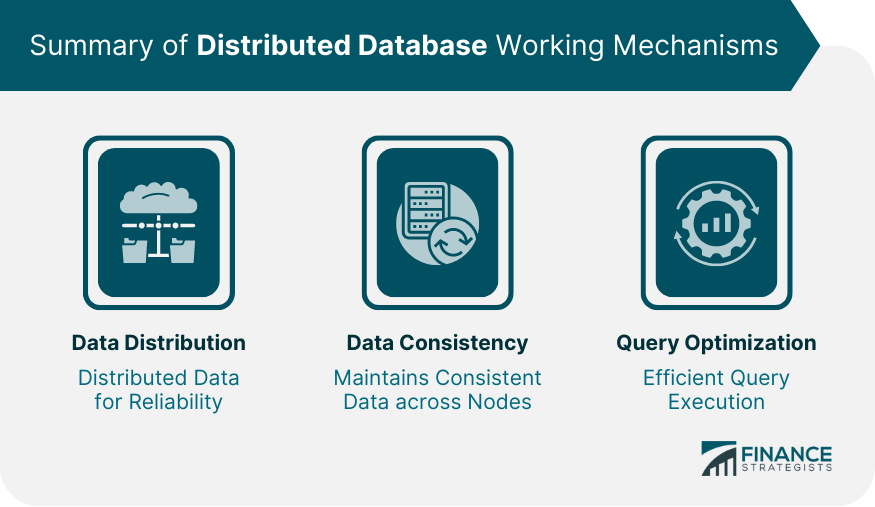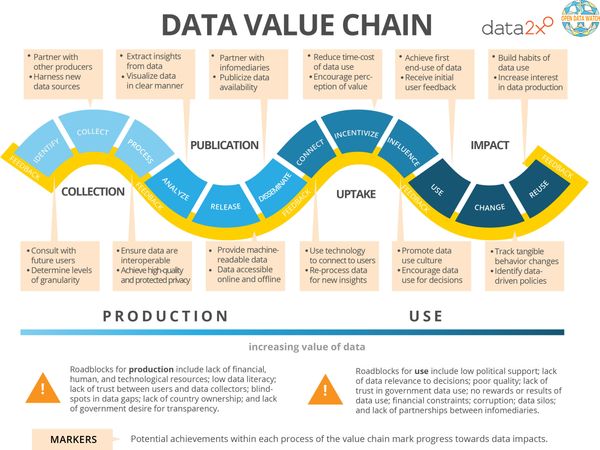Overview
Introduction to Oracle Database Performance Monitoring and Tuning
Oracle Database Performance Monitoring and Tuning is a critical aspect of managing an Oracle database. It involves analyzing and optimizing the performance of the database to ensure it operates efficiently and meets the needs of the users and applications. Performance monitoring involves tracking key metrics such as response time, throughput, and resource utilization to identify any bottlenecks or areas for improvement. Tuning, on the other hand, involves making adjustments to the database configuration, schema design, and SQL queries to optimize performance. By implementing effective monitoring and tuning strategies, organizations can maximize the performance and scalability of their Oracle databases, resulting in improved productivity and user satisfaction.
Importance of Performance Monitoring and Tuning
Performance monitoring and tuning are crucial aspects of managing an Oracle database. By regularly monitoring the performance of the database, administrators can identify and address any issues that may be affecting its efficiency and responsiveness. This ensures that the database operates at its optimal level, providing users with fast and reliable access to data. Additionally, performance tuning involves making adjustments to the database configuration and query optimization to enhance its overall performance. This includes optimizing SQL queries, indexing tables, and adjusting memory allocation. By implementing effective performance monitoring and tuning strategies, organizations can improve the overall performance of their Oracle databases, resulting in increased productivity, reduced downtime, and enhanced user satisfaction.
Key Metrics for Performance Monitoring
Performance monitoring is crucial for optimizing the performance of Oracle databases. By monitoring key metrics, administrators can identify bottlenecks and take necessary actions to improve performance. Some of the key metrics for performance monitoring include CPU utilization, memory usage, disk I/O, and network latency. These metrics provide insights into the overall health and efficiency of the database. Additionally, administrators can leverage the features of PostgreSQL to further enhance performance. PostgreSQL offers advanced query optimization techniques, parallel processing capabilities, and efficient indexing mechanisms. These features enable administrators to fine-tune the database and achieve optimal performance. By utilizing the features of PostgreSQL, administrators can ensure that their database operates at peak performance levels.
Understanding Oracle Database Performance

Understanding Database Performance
Understanding Database Performance
Database performance is a critical aspect of any organization’s operations. It directly impacts the efficiency and effectiveness of data retrieval and manipulation. To ensure optimal performance, it is essential to monitor and tune the Oracle database regularly. One of the key tools for monitoring and tuning database performance is SQL Server Extended Events. These events provide valuable insights into the database’s behavior and can be used to identify and resolve performance bottlenecks. By leveraging SQL Server Extended Events, organizations can proactively address performance issues and optimize their database operations.
Identifying Performance Bottlenecks
Identifying performance bottlenecks is crucial for optimizing the performance of an Oracle database. One key aspect of this process is optimizing the MySQL query plan. By analyzing and fine-tuning the query plan, database administrators can significantly improve the execution time of queries. Query plan optimization involves identifying inefficient query plans and reorganizing or rewriting them to enhance performance. This process often requires a deep understanding of the database schema, indexing strategies, and query optimization techniques. Additionally, monitoring the performance of the database during query plan optimization is essential to ensure that the changes made result in improved performance.
Analyzing Performance Metrics
When it comes to analyzing performance metrics, one of the key considerations is the comparison between MySQL and MariaDB. Both are popular relational database management systems, but the question of whether there is a winner between the two remains. MySQL, developed by Oracle Corporation, is widely used in various industries and has a strong reputation for its stability and scalability. On the other hand, MariaDB, a community-developed fork of MySQL, offers additional features and improvements while maintaining compatibility with MySQL. The choice between MySQL and MariaDB ultimately depends on the specific needs and requirements of the project. It is important to carefully evaluate the performance metrics, such as query execution time, throughput, and resource utilization, to determine which database system is better suited for the given workload. By considering the strengths and weaknesses of both MySQL and MariaDB, organizations can make informed decisions to optimize their database performance.
Monitoring Tools and Techniques

Built-in Monitoring Tools
Oracle Database provides a comprehensive set of built-in monitoring tools that enable administrators to effectively monitor and tune the performance of their databases. These tools offer valuable insights into various aspects of the database, including resource usage, query performance, and system health. One of the key advantages of these built-in monitoring tools is their ability to provide real-time monitoring and analysis, allowing administrators to quickly identify and resolve performance issues. Additionally, these tools offer a wide range of performance metrics and statistics, empowering administrators to make informed decisions when it comes to optimizing the database performance. With the help of these tools, administrators can proactively monitor the database, identify bottlenecks, and implement necessary tuning measures to ensure optimal performance and scalability.
Third-Party Monitoring Tools
Third-party monitoring tools play a crucial role in Oracle database performance monitoring and tuning. These tools provide additional insights and functionalities that go beyond what Oracle’s built-in monitoring capabilities offer. One of the challenges faced by database administrators in 2019 is data compression. Data compression helps optimize storage and improve performance, but it also introduces challenges that need to be addressed. Third-party monitoring tools can assist in identifying and resolving data compression challenges, ensuring that databases are efficiently compressed without sacrificing performance. By leveraging these tools, administrators can stay ahead of the game and proactively manage data compression issues in their Oracle databases.
Automated Monitoring Techniques
Automated monitoring techniques play a crucial role in ensuring optimal performance of Oracle databases. These techniques leverage advanced tools and technologies to continuously monitor various performance metrics, identify potential bottlenecks, and proactively address them. By automating the monitoring process, database administrators can save time and effort, allowing them to focus on other critical tasks. Additionally, automated monitoring provides real-time insights into the health and performance of the database, enabling administrators to take immediate corrective actions. To effectively utilize automated monitoring techniques, it is essential for database administrators to possess the necessary skills. A skilled database administrator should have a deep understanding of Oracle database architecture, query optimization, performance tuning, and troubleshooting. They should also be proficient in utilizing monitoring tools and interpreting performance metrics. With these skills, database administrators can effectively leverage automated monitoring techniques to ensure the smooth and efficient operation of Oracle databases.
Tuning Techniques for Performance Optimization
Identifying and Resolving Performance Issues
In order to effectively identify and resolve performance issues in Oracle Database, it is essential to utilize proper monitoring and tuning techniques. One important aspect of this process is the use of visualization tools. Visualization allows DBAs to analyze and understand performance data in a more intuitive and comprehensive manner. By visualizing key metrics such as CPU usage, memory utilization, and I/O statistics, DBAs can quickly identify bottlenecks and areas of concern. Additionally, visualization tools enable DBAs to track performance trends over time, making it easier to detect and resolve recurring issues. To further enhance the monitoring and tuning process, it is recommended to utilize advanced visualization features such as interactive charts and graphs, which provide a more interactive and dynamic way of analyzing performance data. By leveraging visualization techniques, DBAs can gain deeper insights into the performance of their Oracle Database and effectively optimize its overall efficiency.
Optimizing SQL Queries
In order to optimize SQL queries, it is important to understand the performance monitoring and tuning techniques for Oracle Database. By monitoring the execution plans, identifying bottlenecks, and analyzing query performance, developers and database administrators can improve the efficiency of their SQL queries. Additionally, indexing and query rewriting techniques can be employed to enhance query performance. It is crucial to identify and eliminate unnecessary joins, reduce the number of rows returned, and minimize the use of expensive operations such as sorting and grouping. By implementing these optimization strategies, organizations can ensure faster query execution and improved overall database performance.
Configuring Database Parameters
Configuring database parameters is a crucial step in optimizing the performance of an Oracle database. By adjusting these parameters, administrators can fine-tune various aspects of the database to meet specific workload requirements. Some of the key parameters that can be configured include memory allocation, I/O settings, and parallel processing. These parameters impact the overall performance and efficiency of the database system. It is important to carefully analyze the workload and consider the hardware and software environment before making any changes to the database parameters. Additionally, regular monitoring and tuning of these parameters are essential to ensure optimal performance and prevent any potential bottlenecks.
Best Practices for Database Performance Monitoring and Tuning

Regular Performance Monitoring
Regular performance monitoring is crucial for maintaining the optimal performance of an Oracle database. In today’s rapidly evolving technological landscape, staying ahead of the curve is essential. As we look towards 2020, it is important to keep an eye on the latest database optimization trends. By regularly monitoring the performance of the database, organizations can identify potential bottlenecks and address them proactively. This proactive approach helps in ensuring smooth operations and maximizing the efficiency of the database. Additionally, monitoring performance allows for timely identification of any issues or anomalies, enabling prompt troubleshooting and resolution. By leveraging the insights gained from performance monitoring, organizations can make informed decisions regarding database optimization strategies and stay competitive in the ever-changing business environment.
Proactive Performance Tuning
Proactive performance tuning is a crucial aspect of managing an Oracle database. By taking a proactive approach, database administrators can identify and address potential performance issues before they impact the system. This involves monitoring key performance metrics, analyzing query execution plans, and optimizing database configurations. Oracle performance tuning involves optimizing SQL queries, improving indexing strategies, and fine-tuning memory allocation. With effective performance tuning, organizations can ensure that their Oracle databases operate at peak efficiency, delivering optimal performance for critical business applications.
Collaboration between DBAs and Developers
Collaboration between DBAs and Developers is crucial for effective database optimization. By working together, DBAs and Developers can identify and address performance bottlenecks, fine-tune queries, and optimize database configurations. This collaboration ensures that the application performs at its best, delivering optimal user experience. Database optimization involves various techniques such as index optimization, query optimization, and performance monitoring. DBAs and Developers can leverage their expertise and collaborate to implement these techniques, resulting in improved application performance and reduced response times. By fostering a strong collaboration between DBAs and Developers, organizations can achieve efficient and well-performing databases.
Conclusion

Summary of Oracle Database Performance Monitoring and Tuning
Oracle Database Performance Monitoring and Tuning is a critical aspect of ensuring optimal performance and efficiency of an Oracle database. It involves monitoring various performance metrics, identifying bottlenecks, and implementing tuning techniques to improve overall database performance. The summary of Oracle Database Performance Monitoring and Tuning can be summarized as follows:
Importance of Continuous Monitoring and Tuning
Continuous monitoring and tuning of an Oracle database is crucial for ensuring optimal performance and efficiency. In today’s fast-paced digital landscape, businesses rely heavily on their databases to store and manage large amounts of data. Without regular monitoring and tuning, databases can become sluggish and unresponsive, leading to decreased productivity and potential data loss. By continuously monitoring and tuning an Oracle database, organizations can proactively identify and address performance bottlenecks, optimize query execution, and ensure data integrity. This is especially important in 2021, as businesses face increasing data volumes and complex workloads. To stay competitive and meet customer expectations, organizations must invest in continuous monitoring and tuning to maximize the performance and reliability of their Oracle databases.
Future Trends in Performance Monitoring and Tuning
Performance monitoring and tuning are critical aspects of managing an Oracle database. As technology continues to evolve, future trends in performance monitoring and tuning are expected to shape the way organizations optimize their database performance. One of the key trends is the increasing importance of real-time monitoring. With the growing complexity of database systems and the need for instant insights, real-time monitoring allows administrators to identify and address performance issues promptly. Another trend is the adoption of machine learning and artificial intelligence in performance tuning. These technologies can analyze vast amounts of data and provide intelligent recommendations for optimizing database performance. Additionally, cloud-based performance monitoring and tuning solutions are gaining popularity, as they offer scalability, flexibility, and cost-efficiency. As organizations increasingly migrate their databases to the cloud, monitoring and tuning in a cloud environment will become essential. Overall, future trends in performance monitoring and tuning are focused on delivering real-time insights, leveraging advanced technologies, and embracing cloud-based solutions.







